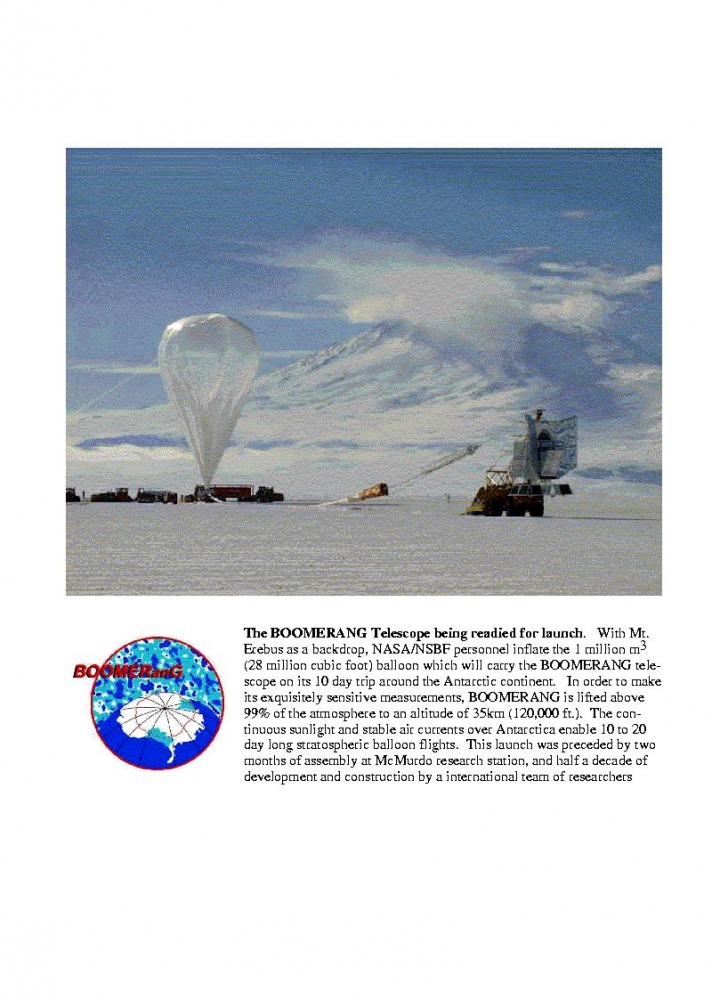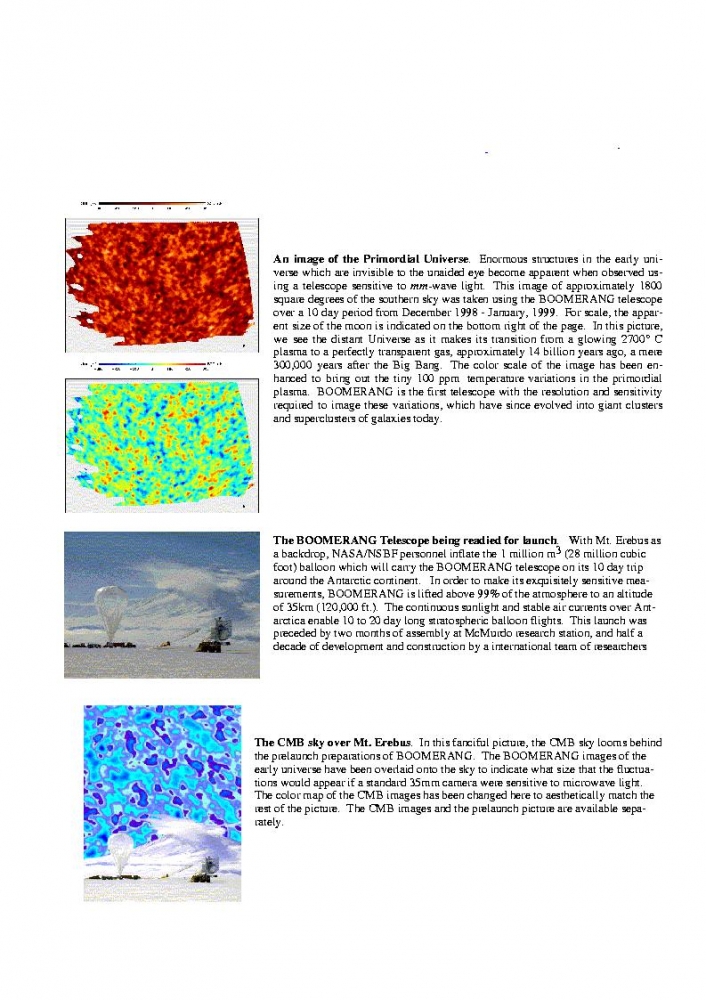

An international team of cosmologists, including scientists
at the University of California, Santa Barbara, has released images that are helping to answer fundamental questions about the cosmos.
These images, the most precise ever collected of the remnant radiation from the Big Bang, are published in the April 27 issue of the international scientific journal Nature.
The first detailed images of structures in the universe when it as only 300,000 years old were obtained by flying a sensitive balloon-borne telescope over Antarctica.
They shed light on some of the most basic questions in cosmology, including the nature of matter and energy in the universe.
They also show that its geometry is nearly flat, rather than curved.
BOOMERANG (Balloon Observations of Millimetric Extragalactic Radiation and Geophysics) obtained the images using an extremely sensitive microwave telescope flown under a stratospheric balloon that circumnavigated Antarctica over eleven days in late 1998 and early 1999.
For 16 months, the BOOMERANG team has worked to interpret the vast quantities of data collected during this flight, resulting in a picture of the universe long before the first stars or galaxies formed.
"These maps are incredibly rich; they are telling us about the seeds of galaxies, the contents of our universe, and even hinting at its
ultimate fate," said Tom Montroy, a UCSB graduate student who
works on the project.
Shortly after the Big Bang, the universe consisted of a primordial soup of subatomic particles and radiation, hotter than the surface of the sun. The universe eventually expanded and cooled enough that neutral atoms could form, leaving the photons free to travel.
These photons are still traveling through the universe today, and are known as the cosmic microwave background (CMB), radiation that comes from all directions.
Ever since this cosmic microwave background radiation was discovered in 1965, scientists have eagerly sought high-resolution images of its faint variations.
NASA's COBE (Cosmic Background Explorer) satellite discovered the first evidence for these variations in 1991,
but its data lacked sufficient detail to show all the structure. The BOOMERANG images are the first to bring the CMB into sharp
focus, with 40 times the resolution of those reported by COBE.
The team's analysis of the apparent size of CMB structures has produced
the most precise measurements ever made of the geometry of space.
"The universe acts like a big lens," explained UCSB team leader John Ruhl, professor of physics at UC Santa Barbara. "According to general relativity, the power of that lens to bend light is related to the density of mass and energy in the universe.
The cosmic background photons have spent a long time in that lens, and give us a very sensitive probe of whether light travels in straight lines or curves in space. The images indicate that light travels in fairly straight lines, so space must be nearly flat."
The measured CMB structures also provide cosmologists with a new accounting of the different forms of mass and energy that exist in the universe.
"It looks like there simply isn't enough normal matter out there, the type of which you and I are made, to account for the total budget,
said Ruhl. "There must be something else to balance the account."
Other ingredients that could make up the deficit include dark matter and the cosmological constant.
BOOMERANG is an ongoing international collaborative effort including 16 universities and organizations in Canada, Italy, the United Kingdom and the United States, led by professor Paolo deBernardis at the University of Rome La Sapienza and professor Andrew Lange at the California Institute of Technology.
Primary support for the BOOMERANG project comes from the National Science Foundation and NASA in the United States; the Italian Space Agency, Italian Antarctic Research Programme and the University of Rome La Sapienza in Italy; and the Particle Physics and Astronomy Research Council in the United Kingdom. The Department of Energy's National Energy Research Supercomputing Center provided supercomputing support in the United States.
Other UC Santa Barbara physics researchers involved in the BOOMERANG project include: Phil Farese, graduate student; Kim Coble,
post-doctoral researcher; and Eric Torbet, post-doctoral researcher.
Related Links



